» ![]() 2011.March.30 » I saw 127 Hours this weekend (on DVD). Wow. What a movie! I mean, how it makes you feel like you're there .. like it's YOUR OWN arm stuck .. and your only hope of getting out alive is with a cheap, dull pocket knife.
2011.March.30 » I saw 127 Hours this weekend (on DVD). Wow. What a movie! I mean, how it makes you feel like you're there .. like it's YOUR OWN arm stuck .. and your only hope of getting out alive is with a cheap, dull pocket knife.
 Finding Your Breaking Point in 127 Hours
Finding Your Breaking Point in 127 Hours
Makes our own afflictions seem petty by comparison. No matter how bad you got it (.. even if you've been waterboarded 183 times by a team of CIA black ops) he has it worse.
Getting you to identify with the character and tricking your mind into believing you're really there .. that's what movies are all about. And this movie does that remarkably well .. tho I'm not sure why.
Almost too well. (I had to hit the pause button a few times and go for a walk.) For example, the Wikipedia article says:
During the screenings at Telluride Film Festival, two people required medical attention. At the first screening, an audience member suffered from light-headedness and was taken out of the screening on a gurney. During a subsequent screening, another viewer suffered a panic attack. Similar reactions were reported at the Toronto International Film Festival.
I mean, everybody who sees this movie already knows the punchline. So there's no element of surprise regarding the plot. Yet it rocks your world. I'm still kinda freaked out.
Eventually I'd like to see ALL the nominees for Best Picture (.. which includes 127 Hours). Social Network is next.
 » Finding Your Breaking Point
» Finding Your Breaking Point
127 Hours would be a good movie to discuss the topic of » "finding your breaking point." Aron (in the movie) found his .. literally, when he broke both bones in his forearm .. one at a time .. which was necessary to extricate himself from his dire predicament.
He talks to himself in a calm tone (after he freaks out) » "Don't lose it, Aron. Don't lose it. Keep it together." What's he talking about there? Dont lose what?
I dont want to give away any more of the film than has already been given .. but I am familiar with the concept of finding one's breaking point. No, I have not yet crossed the threshold .. but I've been down the street, and I'm familiar with the neighborhood.
Today's entry continues & concludes in Ye Olde Rad Blog v4 .. see here » Finding Your Breaking Point in 127 Hours
» ![]() 2011.March.28 » There I was .. minding my own business .. sitting in the coffee shop this weekend. When up walks Big Al (.. a Cuban transplant who can usually be found poring over something with a curious title). Next thing ya now we're on the subject of laptops.
2011.March.28 » There I was .. minding my own business .. sitting in the coffee shop this weekend. When up walks Big Al (.. a Cuban transplant who can usually be found poring over something with a curious title). Next thing ya now we're on the subject of laptops.
 New Lenovo Laptop - IdeaPad Z560 i3
New Lenovo Laptop - IdeaPad Z560 i3
"I'll go with you," I said, when he mentioned dropping by the store to eyeball the last day of a 4-day sale.
On the way over he *blasted* The Thrill is Gone (you know, BB King & Lucille). Sounded really good. Remarkably clear. (Hope Al didnt mind my singing.)
I was good-n-amped on some tasty Ethiopian. Heck, we almost solved the question of the meaning-of-life on that 10-min jaunt to the store.
Before I knew what was happenin' » boom! Out comes the plastic. Big Al bought himself a new laptop. Then (best of all) he gave it to me .. to set up & configure for him. (I'm good at that .. cuz I've done it so many times.)
 So sitting here I have new laptop. Lenovo = IBM. They still make the ThinkPad, which were usually too expen$ive for my blood. But I always admired their stylish black design. Still do.
So sitting here I have new laptop. Lenovo = IBM. They still make the ThinkPad, which were usually too expen$ive for my blood. But I always admired their stylish black design. Still do.
Lenovos are priced reasonably. He got the IdeaPad Z560. Review. It's not a powerhouse, but it *is* new .. for only $450. And it's not even a Celeron.
» The Thrill Aint Gone
Stayed up to 2AM last night. I really enjoy setting up a nice, new machine. Yeah, the thrill is still there. =)
It has an Intel i3 core (2.53 GHz) processor with 4 gigs of memory & a 320-gig hard drive + 15.6-inch screen. Very nice.
Regarding the latest crop of Intel processors, the Core i7 is good as it get$. There is also a Core i5.
Today's entry continues & concludes in Ye Olde Rad Blog v4 .. see here » New Lenovo Laptop - IdeaPad Z560 i3
» ![]() 2011.March.17 » Happy St. Patty's day. Erin go bragh. The Japanese are gonna need some of that luck-of-the-Irish .. seeing how Tokyo is the world's most populous city. Cuz now we hear reports that their spent fuel pools at Fukushima have gone DRY.
2011.March.17 » Happy St. Patty's day. Erin go bragh. The Japanese are gonna need some of that luck-of-the-Irish .. seeing how Tokyo is the world's most populous city. Cuz now we hear reports that their spent fuel pools at Fukushima have gone DRY.
 Spent Fuel Pools Dry at Fukushima
Spent Fuel Pools Dry at Fukushima
That's what it sounded like all along, which is probably where they got all the hydrogen to blow the tops off those reactor buildings.
[ Uncovered fuel produces hydrogen when the cladding overheats and begins to oxidize, and there's much more fuel stored in the SFP's than there is sitting in the reactor core. ]
The 9.0 earthquake (which reportedly continued to rock-n-roll for some 5 minutes, and exceeded the plant's structural design criteria based on its flawed seismic risk assessment) probably cracked the foundations of the aging plants and now the spent fuel pools can no longer hold water.
If true, that would be very bad. Worse than I could've ever possibly imagined. Cuz there's no pressure vessel (6-inch thick steel) surrounding the SFP .. like there is for the reactor core.
Whatever they are paying those guys, it aint enough. We're talking potentially lethal doses dealing with that problem. (You cant just walk up to the pool and look in to check water level, or you're dead.)
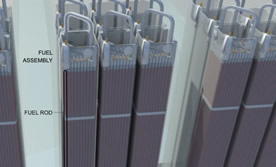 Conflict Between U.S. & Japanese Sources
Conflict Between U.S. & Japanese Sources
There exists a surprising disagreement between the US NRC and those in Japan. The U.S. is saying "we saw" (via aircraft) that the pool is dry .. whereas those in Japan say "we saw" .. it's got water.
Uh, somebody is lying. Here's what I say » "Show me these photos."
I would be freaking out if I were working at a plant where the SFP is dry .. even more so than at a plant where we had lost core integrity. (Sentiment echoed by the U.N.'s Nuke chief.)
The core has a 6-inch thick metal pressure vessel around it .. which will not only provide shielding, but keep most of the nasties inside.
You do not have that luxury with a SFP. Plus the source is so much BIGGER. You can store much more fuel in a SFP than you can in the core of a reactor.
Which means the exposure dose rates do not drop off as quickly with distance. There are different formulas for calculating dose-rates from a point-source, a line-source, and a plane-source.
[ Time, distance & shielding are the 3 ways we limit our exposure to radiation. ]
If you think about it logically, it makes sense. Think about how the nasty smell of garbage drops off with distance from different-sized sources. With an SFP, you are not merely standing next to a garbage can. Rather, you are AT the dump. =)
First, if the spent fuel pools are dry, you dont want helicopters buzzing overhead, blowing the radioactive contamination to the four corners of the earth. And the pilots are gonna get cooked (.. super high radiation levels) unless they fly high above, which will make it difficult for them to hit their target. And God forbid if anything were to happen to the engine while hovering over the pool.
The #1 question TEPCO needs to answer when/if they restore cooling » Is the pool holding water? (That's easy to tell.)
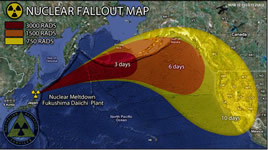 That was a stupid idea. Water cannons (from below) would've been better.
That was a stupid idea. Water cannons (from below) would've been better.
If I were king, I'd throw a big fat hose up-n-over .. into the pool. Maybe shoot it up there with a catapult or lift it with a crane .. and fill that suker with nuclear-grade concrete (.. add a little boron for good measure).
Use a crane to position a high-resolution camera way up high, so you can see wtf you're doing.
Then build a wall around the entire site .. and come back in a thousand years to see what kind of radiation levels we got. (Thank God for radioactive decay.)
What else can they do? Nothing. They're screwed. If they keep adding water to a leaking SFP, where is that water going? Into ground water? Into the ocean? [ The nuclear motto » dilution is the solution to pollution. ]
Put up a big sign » "The Fukushima Radioactive Waste Disposal Facility - Keep Out 'til 3011". Bury the whole place in concrete (nuclear sarcophagus) and chalk it up to a learning experience. Or bad luck.
[ Note that concrete weighs about two and one-half times MORE THAN WATER per unit volume. That means they'll only be able to fill the SFPs roughly one-third full .. to achieve the same weight-loading .. to avoid overloading the plant's structural design capacity. Rad civil engineering. ]
These pools were never intended for long-term storage of spent fuel. This has been an issue for many years now. "What're we gonna do when the pool is full?"
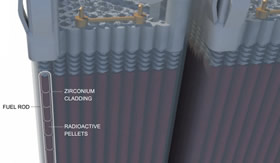 Dry Storage Casks
Dry Storage Casks
Good time to buy stock in whatever company makes dry-storage casks. Those things are safe, but you have to wait ~5 years .. until the cell is "cool" enough (.. enough decay heat has diminished) .. before you can pull it out of the water and not have it cook itself.
I have worked with those casks. Basically lower it into the pool. (Gigantic, super heavy.) Drop in 4 cells (.. which never break the surface of the water). Put the lid back on and pull the cask out of water. Drain water out. Hose it down.
Spend a few days decontaminating by hand. (Stainless steel.) I dont recall hydrolazing these things.
If you hose it down with clean water while it's going INTO the pool, it's easier to decontaminate coming out .. cuz the clean water fills up all the little pores in the stainless steel.
[ I thought it was a stupid idea at first, but it really works. =) ]
I mean, you could drop this thing out of a plane at 30,000 feet and I dont think it would break. Tho you *would* have a big hole somewhere. =) Plus, they knock down the dose-rate to a surprisingly low level.
Today's entry continues & concludes in Ye Olde Rad Blog v4 .. see here » Nuclear Spent Fuel Pools DRY at Fukushima
» ![]() 2011.March.13 » Do you not find it somewhat curious .. with all this talk of meltdown in Japan .. that just last month I posted an article (about the use of Visual Metaphor in web design) .. which contained a photo of a fuel cell, pulled from a nuclear reactor (.. glowing beautifully with Cherenkov radiation)? Cuz I do.
2011.March.13 » Do you not find it somewhat curious .. with all this talk of meltdown in Japan .. that just last month I posted an article (about the use of Visual Metaphor in web design) .. which contained a photo of a fuel cell, pulled from a nuclear reactor (.. glowing beautifully with Cherenkov radiation)? Cuz I do.
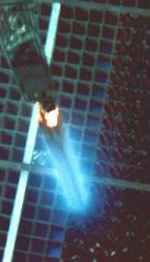 Nuclear Reactor Meltdown at Fukushima
Nuclear Reactor Meltdown at Fukushima
Uh, actually there were two pictures.
Moreover, you might recall, how (in that post) I included a story .. about a Japanese Nuclear engineer, who died due to radiation exposure ..
.. when he stuck a pipe in the water (.. while trying to spy the serial number on the ID tag attached to a spent fuel cell).
You must admit » it does seem a little trippy .. given the TIMING of that post. Cuz shortly thereafter we have reports of nuclear fuel cells melting down in Japan, and people dying there.
And consider how the story of the engineer was not at all germane to the topic of discussion that day (i.e. web design). It seemed to stick out. No?
Afterwards, I asked myself why I added it, since it had nothing to do with web design. I normally try to stay on-topic .. unless there's a compelling reason to digress. And that particular digression was a BIG one (consisting of several paragraphs).
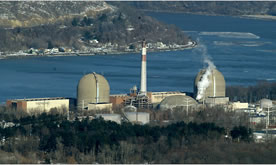 First-hand Experience
First-hand Experience
Reactors are one of those things with which I have plenty of first-hand experience. In the Navy, for example, I literally *lived* with a reactor .. while stationed aboard a nuclear-powered ballistic-missile submarine, home-ported in Pearl Harbor, Hawaii (.. with the Dog) for a few years.
In commercial nuclear power, I might as well have lived there. I've worked at a handful of different plants around the country .. as a migrant nuclear worker of sorts.
I've worked at both pressurized and boiling water reactor plants. (I prefer PWRs, as I think do most rad ho's.) On both the East & West coasts.
I have been to the nasty-of-nasties (highest-dose areas) .. in both PWR & BWR plants. Which is why I have a lifetime occupational exposure record with respectable numbers (.. selling my body for $Rad dollars).
[ Dont think I wasnt a little concerned when the Bug was born .. but he came out "perfect." Whew. ]
Meanwhile, military/Navy plants have no really nasty places (.. radiation-wise). You could literally eat lunch sitting on the reactor in your street clothes. (If they would let you. Which they dont.)
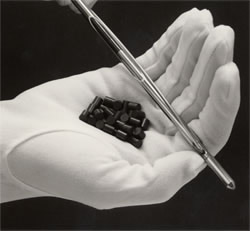 » Ceramic Pellets Inside Long Metal Pins (Rods)
» Ceramic Pellets Inside Long Metal Pins (Rods)
Yeah, I know a little about reactor fuel cell construction. Tho that was never my focus. (Rather » plant operations & radiation protection.) The military doesnt teach you how to build a reactor, just how to operate one.
They do however, teach enough so you know what kind of animal you're dealing with. From an operational perspective, you dont really need to know from-whence-the-beast-cometh. Only what it looks-like here-n-now.
But I picked up bits here & there .. along the way. Plus I ask lotsa questions.
A fuel cell is comprised of little pellets (dark gray), similar in size and shape to that of a thin cigarette filter .. like a long stick cut into small pieces, tho a little smaller and stubbier than a cigarette filter.
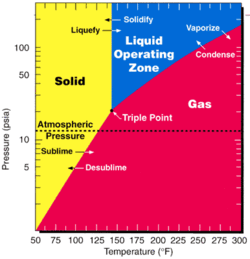 A bucket-load of these ceramic (uranium-containing) fuel pellets are fed into long pins (called "rods" by some) .. that are maybe 12-feet tall.
A bucket-load of these ceramic (uranium-containing) fuel pellets are fed into long pins (called "rods" by some) .. that are maybe 12-feet tall.
These pins are made of an exotic (metal) alloy .. specifically design to withstand the enormous heat and pressure that is generated when a reactor is operating at power (.. a truly beautiful thing, technologically speaking).
[ Uranium is classified as a METAL, but they (somehow) convert it into a GAS (Uranium hexafloride) .. during the production process .. in order to enrich it .. using centrifuges that spin at superfast speeds. More about enrichment later.
I'm no chemist, but the technology required to turn a super-heavy metal such as uranium into a gas .. seems very sophisticated. No?
Modern alchemy. ]
 All of the fuel cells that I saw came in grids of 8-pins by 8-pins, for a total of 64 pins per fuel assembly. (I hear there exist other configurations than the 8x8 variety.)
All of the fuel cells that I saw came in grids of 8-pins by 8-pins, for a total of 64 pins per fuel assembly. (I hear there exist other configurations than the 8x8 variety.)
[ Many of the news articles that I read used the term 'fuel rods'. I have never heard that term used before. Rods were always control rods (discussed below).
So maybe they use a different reactor core construction in Japan. And I guess you could call these pins (that make up a fuel cell) 'rods'. But I wouldnt.
Intuitively, to me, a rod is round and a cell is square. Either way, melting nuclear fuel is very bad, no matter what terminology you use. ]
That glowing shaft pictured above is a single fuel cell. The average reactor core consists of maybe a thousand such assemblies .. tho these smaller, older reactors at Fukushima used half that many. I'm not certain, but I think the life of a fuel cell in a reactor core is ~3 to 5 years. Then it's 'spent'.
New fuel cells are first loaded at the outer edges of a reactor core (.. during a refueling outage, while the reactor is shutdown). During subsequent refueling outages, they are moved toward the inner areas, where the neutron flux is greater. The goal here is to try to provide an 'even' burn (uranium) across the core. No localized hot spots.
I never did find out how much each fuel assembly costs. I'd guess a quarter mil .. but if anybody knows for sure, my curiosity will thank you.
 » Decay Heat & Reactor Scram
» Decay Heat & Reactor Scram
The problem with the reactors in Japan is » decay heat .. caused by radioactive decay of the fission products.
Newly-fissioned fragments are not 'happy' campers. They undergo radioactive decay vigorously and often, a process which gives off considerable heat (.. tho not nearly as much as the fission process itself).
This process of decay subsides with time, tho never stops (.. at least not for thousands of years).
First sign of a problem, the reactor operators are gonna perform a normal or expedited reactor shutdown.
In the case of a massive earthquake, I guess they would scram the reactor, which is like hitting a kill-switch .. that immediately sends all control rods IN (.. to the reactor core). A scram is the closest thing you get in nuclear power to a get-out-of-jail free card.
Today's entry continues & concludes in Ye Olde Rad Blog v4 .. see here » Nuclear Reactor Meltdown at Fukushima in Japan
» ![]() 2011.March.08 » Regulars might recall how I delved into Nietzsche last autumn. Time & distance have since provided some perspective to the strange & interesting things I found there. The overriding impression I'm left with — after months of Nietzsche's ideas fading in my rear-view mirror — is this »
2011.March.08 » Regulars might recall how I delved into Nietzsche last autumn. Time & distance have since provided some perspective to the strange & interesting things I found there. The overriding impression I'm left with — after months of Nietzsche's ideas fading in my rear-view mirror — is this »
 Nietzsche | A Rearview Perspective
Nietzsche | A Rearview Perspective
» It doesnt much matter what particular religion a person might claim (or proclaim), or even whether they faithfully carry out the tenets of their specific denomination.
What matters is » how good a person they are. How they live their lives.
I realize this is waay-subjective, but you know what I mean (.. especially if you have an idea of what 'good' is).
Nietzsche is/was very much about » morals .. particularly as they pertain to VALUES. At least, that's what struck me about him. Certainly that's what surprised me most, and is what I came away thinking about.
 Not surprisingly, I now have a more discriminating eye where morals & moral behaviors are concerned.
Not surprisingly, I now have a more discriminating eye where morals & moral behaviors are concerned.
Tho sometimes I wish I didnt see as clearly. Cuz the world is no Disneyland. Definitely not the "happiest place on earth." Ignorance is bliss. (Or, at least, it can be.)
Tho I am also more tolerant and forgiving now. Cuz I realize how difficult it can be for folks to operate congruently with their inner moral compass. (Can we call this 'conscience'?)
Anyway, I never would've imagined that Nietzsche would have had that kind of effect on me. I do however, feel stronger for having had the experience.
It was initially exhilarating — both intellectually & morally — but also challenging, spiritually, which later grew fatiguing (.. like the end of a hard workout).
It's good to challenge ourselves from time to time. To find what things we fear and go there, to confront them (our fears) .. for that very reason. You just *know* you're gonna find something gnarly lurking behind the scary door.
 After reading Nietzsche, I realized that people can walk out of church and do bad things. So the church, or the religion, is obviously not the thing that makes a person moral.
After reading Nietzsche, I realized that people can walk out of church and do bad things. So the church, or the religion, is obviously not the thing that makes a person moral.
Rather it's the IMPACT someone has on others that matters. That's what really counts (.. from a moral standpoint).
Sure, I knew this before. But Nietzsche had a way of bringing it out, front-n-center. Quite strikingly. Attending church doesnt make one moral. It's what happens OUTSIDE the heavy wooden doors that count. Right?
I'm also more in touch with my own moral compass. Can sense it more clearly, more cleanly. And with this clarity has come a sense of responsibility.
We dont do the right thing because God wants us to, or because he'll toss a few lightning bolts our way if we dont. No, we do the right thing cuz .. it's the right the thing to do. And cuz we'll know if we dont. And we'll think less of ourselves (.. if we have a conscience).
Today's entry continues & concludes in Ye Olde Rad Blog v4 .. see here » Nietzsche | A Rearview Perspective
» ![]() 2011.March.01 » The Opera web browser is made in Norway (.. with headquarters in Oslo, the nation's capital). Before reading today's entry you should download & install a copy (currently at v11.x) .. as a way of thanking them. For what? Keep reading.
2011.March.01 » The Opera web browser is made in Norway (.. with headquarters in Oslo, the nation's capital). Before reading today's entry you should download & install a copy (currently at v11.x) .. as a way of thanking them. For what? Keep reading.
 The Story Behind HTML 5
The Story Behind HTML 5
HTML 5 is coming. Sooner than many had expected. That's good news. (The Standards-creation process » aqui.)
The W3C, which is headed by Tim Berners-Lee — the guy who invented the Web and was subsequently knighted — operates on a consensus basis.
This might be why changes to Web standards (called Recommendations) such as HTML & CSS are made at such a frustratingly glacial pace.
Getting people from Microsoft & Apple (and others who make browsers) to agree on anything is no mean feat.
In '98, the W3C decreed that HTML was done (toast) and that XML represented the way forward.
The current spec/standard (that I use) is called » XHTML 1.0, which is simply an XML version of HTML. It uses HTML elements wrapped in (stricter) XML syntax. This is the standard used by most web pages being written today.
» <!doctype html>
HTML5 was not always called HTML5. Rather it started out as something called » Web Applications 1.0, which began in 2004 when folks from Mozilla & Apple joined forces with a group from Opera, who was not convinced that XML represented the best way for the Web to proceed.
They called themselves the » WHATWG .. the Web Hypertext Application Technology Working Group. (You must admit, WHATWG is a funny name .. especially for a group of über-geeks.)
» The Philosophical Battle Line » Backwards-Compatibility
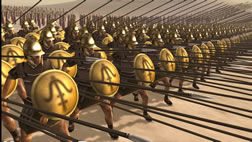 But let's back up a bit. What's known today as HTML5 actually began as a philosophical battle. (Everybody loves a good philosophical battle, and a good story.) The battle was over » backwards-compatibility. Sorta. It was definitely a prime consideraton in the battle that ensued.
But let's back up a bit. What's known today as HTML5 actually began as a philosophical battle. (Everybody loves a good philosophical battle, and a good story.) The battle was over » backwards-compatibility. Sorta. It was definitely a prime consideraton in the battle that ensued.
The problem was » XHTML 2.0. It was a revolutionary design-concept .. that broke backward compatibility with HTML. Something that had never happened before. Moreover XHTML 2.0 came with draconian error-handling, which would cause browsers to stop rendering a page if errors were detected.
This draconian path of XHTML 2.0 that broke backward-compatibility with HTML, and where errors would not be tolerated, was the course the W3C had chosen for the Web's future.
In 2004, the W3C's futuristic purity-of-design philosophy (embodied by XML-based » XHTML 2.0) was challenged by a small group from Opera, who claimed that a pragmatic approach (that didnt break backward compatibility) would be a better solution. A better idea.
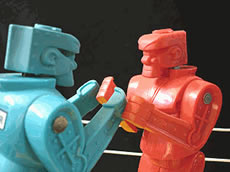 » Pragmatism vs Purity of Design
» Pragmatism vs Purity of Design
Pragmatism vs purity of design .. that's a good match up for any geek. Normally (without knowing the details) I would side with P-o-D. But, we're talking about the Web .. which we want to be EASY for people to use.
I mean, ease-of-use is one of the main things that makes the Web so cool. Right? Anybody and their grandma can use it. But I can feel it becoming more difficult. Of course, the more power you bring to any software or technology .. the greater the learning curve to wield that power.
Before I learned CSS, webmaster-life was tough sledding. Before I learned my way around the Linux shell, web admin-life was also tough. When you learn how to use it (.. becoming a student) .. technology can be pretty cool.
Anyway, the gang at Opera developed a proof-of-concept spec called » Web Forms 2.0 - that extended the functionality of HTML forms withOUT breaking backward-compatibilty. "See!" they exclaimed. "It can be done. In your face, Timmy-boy. I mean, Sir Tim."
Nevertheless, the W3C rejected their proposal, claiming it conflicted with the course they had already laid out and had already committed to.
Today's entry continues & concludes in Ye Olde Rad Blog v4 .. see here » The Story Behind HTML 5
XHTML 1.0 Strict » Validate | • | Return to » Top | • | Analyze page
« News for February, 2011 « PREVIOUS || TOP || NEXT » News for » April, 2011 || [Archive Index]

